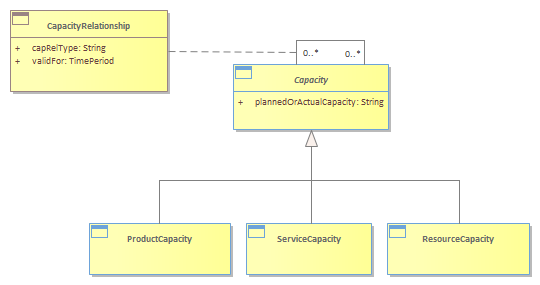Figure CM.01 - Types of Capacity Entities

|
Project:
|

Figure CM.01 - Types of Capacity Entities : Class diagram
<b>Capacity and the Business Process Framework (eTOM)</b><br/>A number of eTOM Level 3 process elements were used as the basis for some of the requirements satisfied by this model. They include the L3 processes, Produce Product Portfolio Business Plans. Produce Service Business Plans, and Produce Resource Business Plans, with L1 Strategy processes. And, the L3 processes, Enable Service Configuration & Activation and Enable Resource Provisioning, within the L1 Operations Support & Readiness processes.<br/><br/>The model presented here shows both capacity and demand on capacity. Beginning with a description of a generalized model, specializations to support various types of capacity and demand are shown.<br/>There are several types (subclasses) of capacity as shown in the following Figure. For example, the requirement exists to be capable of delivering 10000 Products during the first week of June in the Northeast geographic area. This would be represented as an instance of ProductCapacity as shown in the figure. Capacity can be expressed in terms of planned or actual Capacity using the plannedOrActualCapacity attribute.<br/>The different types (subclasses) of Capacity can be related to one another. For example, ServiceCapacity may be used to calculate ResourceCapacity. Or, Capacity could be aggregated. The CapacityRelationship entity provides support for these and other inter-demand relationships.<br/>
|


